Welcome to Visit Durham, England Places
The Walkfo guide to things to do & explore in Durham, England
![]() Visit Durham, England places using Walkfo for free guided tours of the best Durham, England places to visit. A unique way to experience Durham, England’s places, Walkfo allows you to explore Durham, England as you would a museum or art gallery with audio guides.
Visit Durham, England places using Walkfo for free guided tours of the best Durham, England places to visit. A unique way to experience Durham, England’s places, Walkfo allows you to explore Durham, England as you would a museum or art gallery with audio guides.
Visiting Durham, England Walkfo Preview
Durham is a cathedral city and civil parish in the district and county of Durham. The settlement was founded over the final resting place of St Cuthbert. Durham Cathedral was a centre of pilgrimage in medieval England. Durham Castle has been the home of Durham University since 1832. When you visit Durham, England, Walkfo brings Durham, England places to life as you travel by foot, bike, bus or car with a mobile phone & headphones.
Durham, England Places Overview: History, Culture & Facts about Durham, England
Visit Durham, England – Walkfo’s stats for the places to visit
With 86 audio plaques & Durham, England places for you to explore in the Durham, England area, Walkfo is the world’s largest heritage & history digital plaque provider. The AI continually learns & refines facts about the best Durham, England places to visit from travel & tourism authorities (like Wikipedia), converting history into an interactive audio experience.
Durham, England history
Early history
Archeological evidence suggests a history of settlement in the area since roughly 2000 BC. The present city can clearly be traced back to AD 995, when a group of monks from Lindisfarne chose the strategic high peninsula as a place to settle with the body of Saint Cuthbert.
Legend of the Dun Cow and city origins
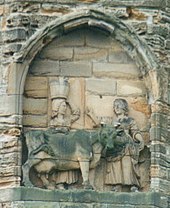
Local legend states that the city was founded in A.D. 995 by divine intervention. Saint Cuthbert’s bier miraculously came to a halt at the hill of Warden Law. The legend is interpreted by a Victorian relief stone carving on the north face of the cathedral.
Medieval history

The shrine of Saint Cuthbert was the most important religious site in England until the martyrdom of St Thomas Becket at Canterbury in 1170. Saint Bede’s bones are also entombed in the cathedral, and these also drew medieval pilgrims to the city. Durham’s geographical position has always given it an important place in the defence of England against the Scots.
Prince Bishops
The Bishop of Durham has always enjoyed the title “Bishop by Divine Providence” as opposed to other bishops who are “Bishops by Divine Permission” The bishops of Durham enjoyed extraordinary powers such as the ability to hold their own parliament, raise their own armies, appoint their own sheriffs and Justices, create fairs and markets, issue charters, salvage shipwrecks, collect revenue from mines, administer the forests and mint their own coins.
Legal system
The Prince Bishops had their own court system, including most notably the Court of Chancery of the County Palatine of Durham and Sadberge. The county also had its own attorney general, whose authority was tested by central government in the case of R v Mary Ann Cotton (1873) Certain courts and judicial posts for the county were abolished by the Supreme Court of Judicature Act 1873.
Civil War and Commonwealth era (1640 to 1660)

The city remained loyal to King Charles I in the English Civil War – from 1642 to the execution of the king in 1649. The city has always relied upon the Dean and Chapter and cathedral as an economic force. The castle suffered considerable damage and dilapidation during the Commonwealth due to the abolition of the office of bishop.
18th century
In the 18th century a plan to turn Durham into a seaport was proposed by John Smeaton. Nothing came of the plan, but the statue of Neptune in the Market Place was a constant reminder of Durham’s maritime possibilities.
19th century
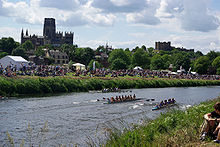
The Great Reform Act 1832 saw the removal of most of the Prince Bishop’s powers. The Municipal Corporations Act 1835 gave governing power of the town to an elected body. All other aspects of the Bishop’s temporal powers were abolished by the Durham (County Palatine) Act 1836.
20th century
Durham was not bombed during World War II, though one raid on the night of 30 May 1942 gave rise to the local legend of ‘St Cuthbert’s Mist’ ‘Durham Castle and Cathedral’ was named a UNESCO World Heritage Site in 1986. Other UNESCO sites include Auckland Castle, North of England Lead Mining Museum and Beamish Museum.
Durham, England landmarks
The whole of the centre of Durham is designated a conservation area. The conservation area was first designated on 9 August 1968, and was extended on 25 November 1980. In addition to the Cathedral and Castle, Durham contains over 630 listed buildings.
Grade II listed
The Chapel of the College of St Hild and St Bede The Victoria, a public house at 86 Hallgarth Street Redhills, the headquarters building of the Durham Miners’ Association. St. Cuthbert’s Catholic Church, Durham Durham Observatory and a great many others.
Durham Cathedral

The Cathedral Church of Christ, Blessed Mary the Virgin and St Cuthbert of Durham was founded in AD 1093. It is generally regarded as one of the finest Romanesque cathedrals in Europe. The rib vaulting in the nave marks the beginning of Gothic ecclesiastical architecture.
Durham Castle

The castle was originally built in the 11th century as a projection of the Norman power in Northern England. It is an excellent example of the early motte and bailey castles favoured by the Normans. The castle is famed for its vast Great Hall, created by Bishop Antony Bek in the 14th century.
Durham, England geography / climate
General geography
The River Wear flows north through the city, making an incised meander which encloses the centre on three sides to form Durham’s peninsula. At the base of the peninsula is the Market Place, which still hosts regular markets. The Market Place and surrounding streets are one of the main commercial and shopping areas of the city. From here, the city spreads out into the Framwelgate, Crossgate, Neville’s Cross and viaduct districts.
Historical geography

The historical city centre of Durham has changed little over the past 200 years. It is made up of the peninsula containing the cathedral, palace green, former administrative buildings for the palatine and Durham Castle. Sir Walter Scott was so inspired by the view of the cathedral from South Street that he wrote “Harold the Dauntless”
Climate
Average daily maximum and minimum temperatures are 12.5 °C and 5.2 °C in Durham. Average annual rainfall is lower than the national average of 1,125 millimetres (44 in) There are only 122 days where more than 1 millimetre (0.04 in) of rain falls compared with 154.4 days. The area sees on average 1445.4 hours of sunshine per year, compared with a national average.
Why visit Durham, England with Walkfo Travel Guide App?
![]() You can visit Durham, England places with Walkfo Durham, England to hear history at Durham, England’s places whilst walking around using the free digital tour app. Walkfo Durham, England has 86 places to visit in our interactive Durham, England map, with amazing history, culture & travel facts you can explore the same way you would at a museum or art gallery with information audio headset. With Walkfo, you can travel by foot, bike or bus throughout Durham, England, being in the moment, without digital distraction or limits to a specific walking route. Our historic audio walks, National Trust interactive audio experiences, digital tour guides for English Heritage locations are available at Durham, England places, with a AI tour guide to help you get the best from a visit to Durham, England & the surrounding areas.
You can visit Durham, England places with Walkfo Durham, England to hear history at Durham, England’s places whilst walking around using the free digital tour app. Walkfo Durham, England has 86 places to visit in our interactive Durham, England map, with amazing history, culture & travel facts you can explore the same way you would at a museum or art gallery with information audio headset. With Walkfo, you can travel by foot, bike or bus throughout Durham, England, being in the moment, without digital distraction or limits to a specific walking route. Our historic audio walks, National Trust interactive audio experiences, digital tour guides for English Heritage locations are available at Durham, England places, with a AI tour guide to help you get the best from a visit to Durham, England & the surrounding areas.
“Curated content for millions of locations across the UK, with 86 audio facts unique to Durham, England places in an interactive Durham, England map you can explore.”
Walkfo: Visit Durham, England Places Map
86 tourist, history, culture & geography spots
Durham, England historic spots | Durham, England tourist destinations | Durham, England plaques | Durham, England geographic features |
| Walkfo Durham, England tourism map key: places to see & visit like National Trust sites, Blue Plaques, English Heritage locations & top tourist destinations in Durham, England | |||
Best Durham, England places to visit
Durham, England has places to explore by foot, bike or bus. Below are a selection of the varied Durham, England’s destinations you can visit with additional content available at the Walkfo Durham, England’s information audio spots:
 | St Cuthbert’s Society Boat Club St Cuthbert’s Society Boat Club (SCSBC) is one of the oldest and most distinguished of Durham’s collegiate clubs. Founded in the summer of 1893 with the aim of representing St.Cuthbert’s Society at collegiate level. |
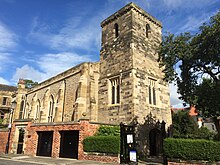 | St Cuthbert’s Church, Durham St Cuthbert’s Church is a Roman Catholic parish church in Durham. It was opened on 31 May 1827 to replace two previous chapels, one run by the secular clergy and the other by the Jesuits. The church is a protected building, being part of the Elvet Green Conservation Area. From 2012 to 2016 the parish was entrusted, along with the chaplaincy, to the Dominican Order. |
 | Shire Hall, Durham The Old Shire Hall is a Grade II listed building in Old Elvet, Durham. It was the headquarters of Durham County Council from 1898 to 1963. |
 | Durham Amateur Rowing Club Durham Amateur Rowing Club is a rowing club on the River Wear. It is based at City Boathouse, Green Lane, Old Elvet, Durham, County Durham. |
 | Purple Radio Purple Radio is Durham University’s Official Student Radio Station. Purple broadcasts online 24 hours a day during term time, from October until June each year. |
 | St Oswald’s Church, Durham St Oswald’s Church is a grade II* listed building and dates from the 12th century. The church is a Church of England parish church in Durham, County Durham. |
 | Institute of Advanced Study (Durham) Institute of Advanced Study was set up to mark Durham’s 175th anniversary. It is intended to attract scholars and public figures from across the world to collaborate on ‘agenda-setting research’ The Institute accepted its first fellows in January 2006 and was formally inaugurated in October 2006. |
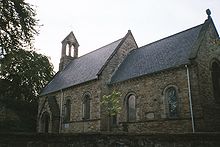 | Cranmer Hall, Durham Cranmer Hall forms part of St John’s College, Durham which is a recognised college of Durham University. It stands in the Open Evangelical tradition and trains ordinands for the Church of England and the wider Anglican Communion. |
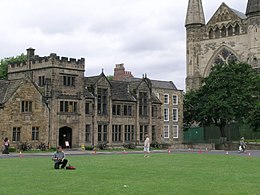 | Palace Green Palace Green is an area of grass in the centre of Durham, England, flanked by Durham Cathedral and Durham Castle. The Cathedral and Castle together form a UNESCO World Heritage Site. The area is accessed by two cobbled streets called Owengate and Dun Cow Lane. |
 | Durham University Department of Engineering The Department of Engineering at Durham University was formed following the split of the School of Engineering & Computer Sciences in October 2017. The engineering research covers civil, mechanical, electrical and electronic engineering research groups. |
Visit Durham, England plaques
![]() 11
11
plaques
here Durham, England has 11 physical plaques in tourist plaque schemes for you to explore via Walkfo Durham, England plaques audio map when visiting. Plaques like National Heritage’s “Blue Plaques” provide visual geo-markers to highlight points-of-interest at the places where they happened – and Walkfo’s AI has researched additional, deeper content when you visit Durham, England using the app. Experience the history of a location when Walkfo local tourist guide app triggers audio close to each Durham, England plaque. Explore Plaques & History has a complete list of Hartlepool’s plaques & Hartlepool history plaque map.